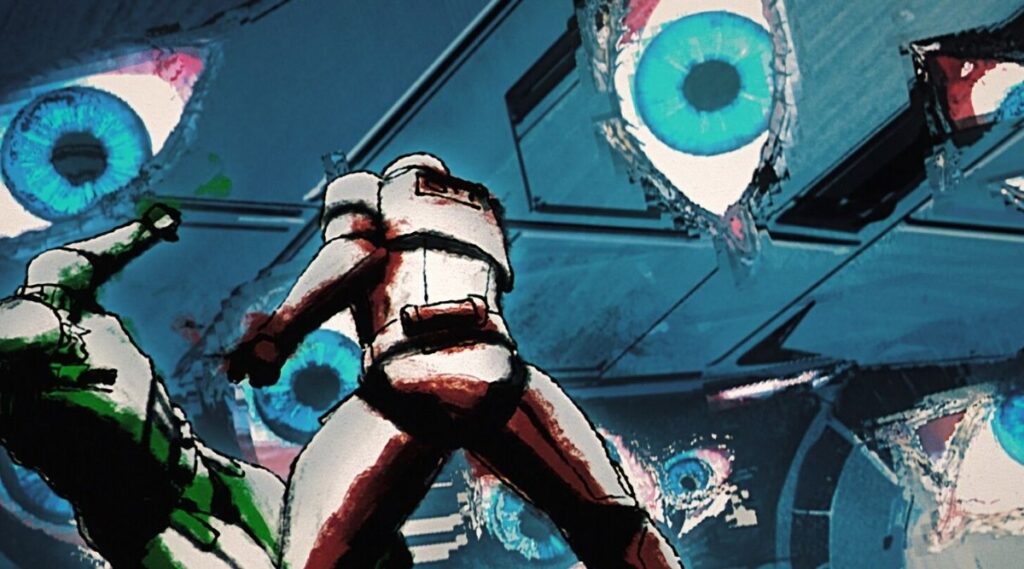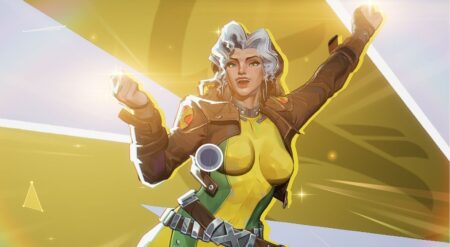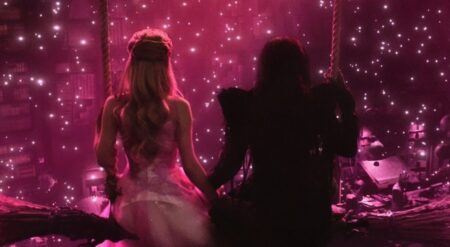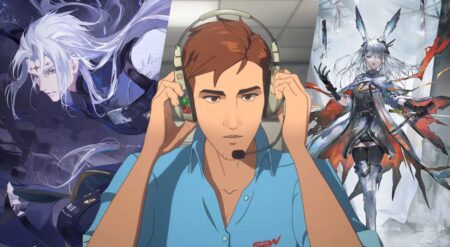At Anime NYC 2025, we had the chance to see “Black”, one of the new shorts in Star Wars: Visions Volume 3, followed by a conversation with its director, Shinya Ohira. Known for his work on Akira, Spirited Away, and the Kill Bill Vol. 1 animated sequence, Ohira brings his signature expressionistic style to Star Wars for the first time. Backed by David Production, his short stands out not only as a visual showcase but as a powerful piece of storytelling without words.
“Black” unfolds as a psychedelic storm inside the mind of a stormtrooper, a “battle between past and present, light and dark, and life and death” told entirely through music and imagery. With no dialogue to guide the narrative, Ohira relies on rhythm, color, and motion to carry meaning—and it works. The score, composed by Hiroyuki Sawano, ebbs and flows with hypnotic precision. It swings from calm serenity to frantic intensity in seconds, enthralling you completely. This is a short you can’t look away from—every beat demands your attention.
James Waugh, VP Franchise Content and Strategy at Lucasfilm, has often said that Visions must feature stories that “have something to say.” “Black” achieves that without ever speaking. It joins the lineage of Lost Stars or Finn’s arc in the Sequel Trilogy in showing stormtroopers as more than faceless soldiers—except here, the story is stripped down to its essence. This stormtrooper is locked in a battle with himself, torn between conscience and duty, haunted by what his life might have been without war.
“Black” is a reminder that there are people under the stormtrooper helmets.
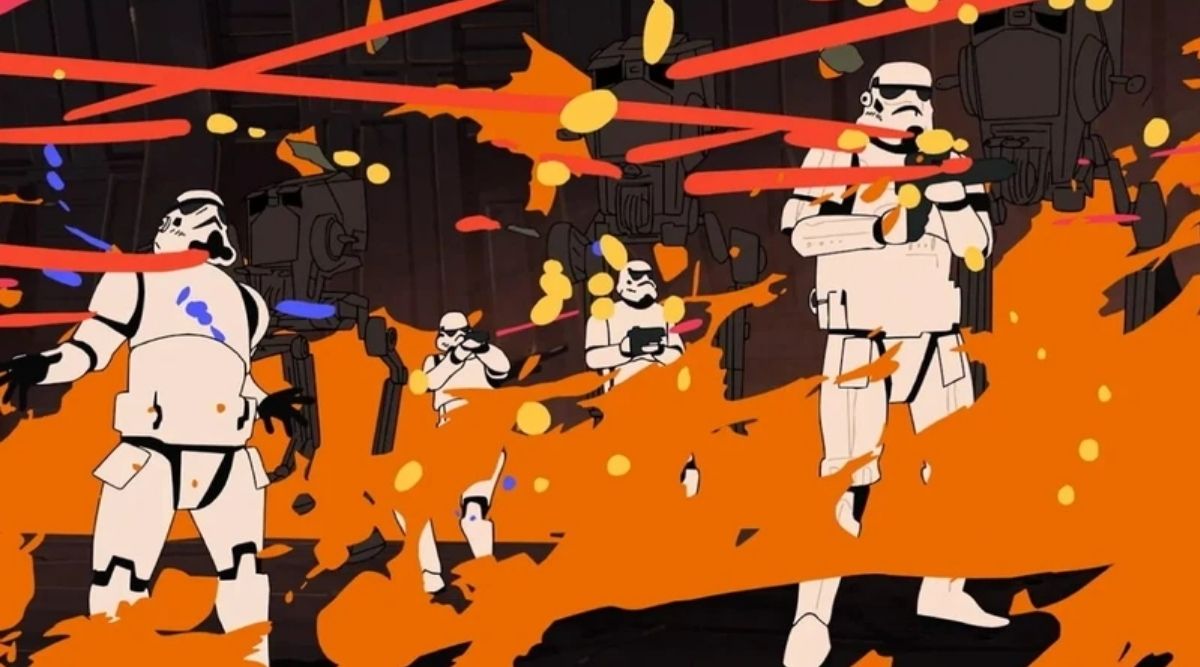
That makes “Black” one of the most subversive shorts in Visions. In Andor, the Empire is painted as monolithic—everyone inside is complicit, everyone is bad. “Black” pushes back on that, suggesting that the struggle between light and dark isn’t reserved for Jedi and Sith.
It lives within the rank and file, too. The destruction of the Death Star is usually celebrated as a victory, but Ohira’s short reframes it as a tragedy—millions died, and not all of them were evil. The cost of war reverberates through the psyche of a single stormtrooper, making the conflict more intimate and more devastating.
Visually, the short is a kaleidoscope. Each sequence shifts styles, with veterans and students alike contributing to the animation. Yet the whole piece remains cohesive, unified by Sawano’s jazz-infused score. It’s ambitious enough to feel theatrical; you can imagine seeing “Black” projected on a big screen, then walking out and immediately debating what it meant with friends. It’s layered, interpretive, and begs to be rewatched, because every viewing offers something new.
If “Black” is any indicator, Star Wars Visions Volume 3 is going to be phenomenal.
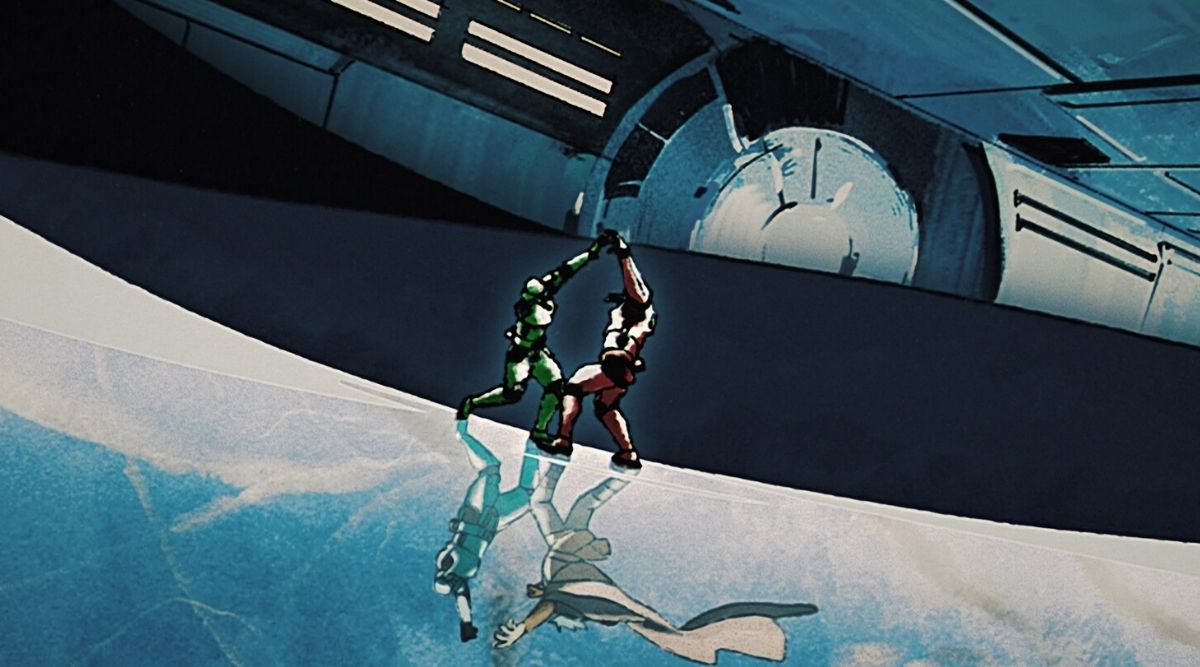
And that’s the real strength of “Black.” Its meaning is open to interpretation. What I saw was a story about the humanity buried inside stormtroopers, about the toll of war, and about the light and dark within all people—not just Jedi and Sith. But that’s my interpretation.
The best part is that when “Black” premieres worldwide, we’ll get to hear countless other perspectives: what resonated, what people saw in it, and what they felt. That dialogue between creators and fans is what makes Visions so vital.
For me, “Black” proves why Visions is the best thing to come out of Star Wars since the Disney acquisition. It allows anime storytellers like Ohira to explore deeply personal, stylized visions of the galaxy far, far away. It’s experimental but grounded, abstract but emotional. And in many ways, it circles back to George Lucas’s original inspirations in samurai cinema and spaghetti westerns—where style and myth carried as much weight as plot.
If this short is any indication of what’s to come in Visions Volume 3, then fans are in for a treat. “Black” doesn’t just expand the anthology: it deepens it, reminding us that even stormtroopers have inner lives worth exploring, and that music, imagery, and emotion can sometimes speak louder than dialogue ever could.
Star Wars: Visions Volume 3 premieres October 29, 2025, exclusively on Disney+.

